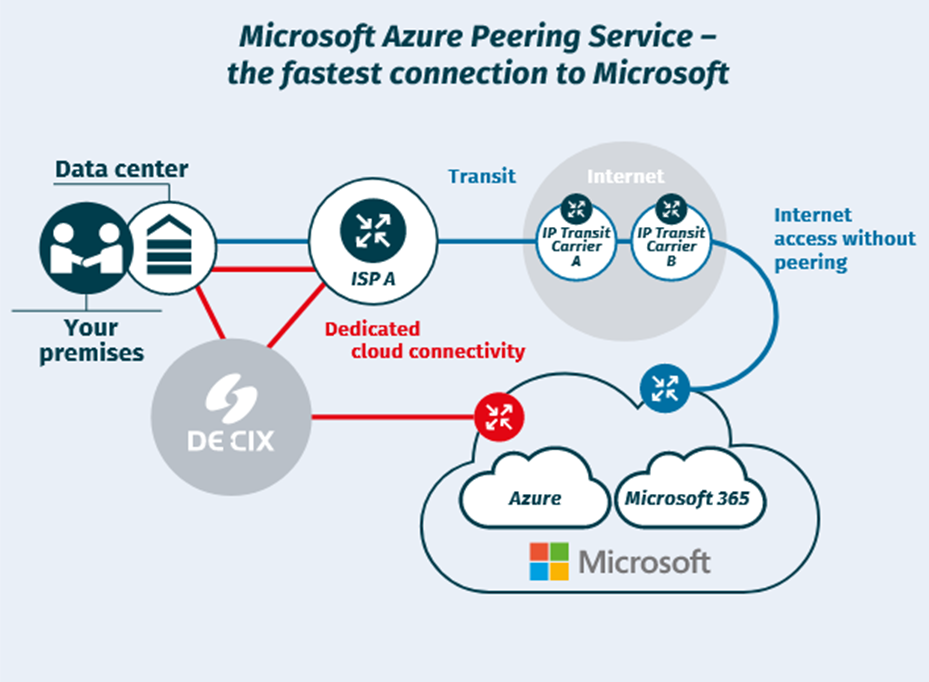Global remote work has become the new norm for businesses of all sizes, the increase in remote workforces, coupled with the growing need for seamless connectivity, has made optimizing network performance and reliability more critical than ever. Microsoft Azure Peering Service has emerged as a solution to address these challenges, offering businesses an efficient way to enhance their user experience in global remote work environments. By leveraging Azure Peering Service, organizations can benefit from improved performance, security, and reliability while ensuring a smoother experience for remote workers across the globe.
What is Azure Peering Service?
Azure Peering Service is a Microsoft service designed to improve the quality of connectivity between enterprise networks and the Azure cloud. Through a combination of private peering, public peering, and optimized routing, this service enables businesses to connect to Azure services via local internet exchange points, improving the overall user experience for remote workers. The service operates through an intelligent routing mechanism that bypasses congested public internet routes and provides direct, low-latency connections.
This capability is particularly beneficial for global organizations that need to maintain a high-quality user experience despite the complexities of a distributed workforce. With Azure Peering Service, businesses can ensure that their remote employees have uninterrupted access to critical cloud applications, regardless of their location.
Benefits of Azure Peering Service for Global Remote Work Environments
1. Reduced Latency and Improved Performance
One of the most significant advantages of Azure Peering Service is its ability to reduce latency, a common issue faced by remote workers relying on cloud-based applications. By providing a direct connection to Azure from local internet exchange points, the service ensures that data travels through optimized routes, minimizing delays. This results in faster load times for applications, smoother video conferencing, and an overall enhanced user experience for remote employees.
In the context of global remote work, this is especially crucial as employees are often spread across various geographical locations. Whether a worker is in India or the United States, Azure Peering Service ensures consistent, high-speed access to Azure-hosted applications.
2. Enhanced Security and Reliability
In a remote work environment, securing sensitive data and ensuring reliable connectivity are top priorities for organizations. Azure Peering Service provides a private peering connection that bypasses the public internet, reducing exposure to potential cyber threats. This direct connection enhances security by providing a more stable and protected pathway for data transmission.
Additionally, Microsoft Azure Peering Service India, for example, leverages local peering points to ensure that the connectivity remains reliable and efficient, even during peak traffic hours. By connecting businesses to Azure through highly reliable, low-latency links, it ensures continuous access to critical resources without the disruptions that may occur when relying solely on public internet routes.
3. Optimized Network Traffic via Internet Exchange Peering
The strategic use of Internet Exchange Peering (IXP) further enhances Azure Peering Service’s ability to optimize network traffic. By leveraging peering arrangements with local IXPs, businesses can route traffic more efficiently between their on-premises network and the Azure cloud, ensuring lower-cost and faster data transfer. This optimized traffic routing reduces the need for long-distance data transmission, leading to faster response times and improved service delivery for remote workers.
4. Cost Efficiency
Azure Peering Service also enables organizations to reduce network costs. By leveraging local peering arrangements and optimizing routing, businesses can avoid the expensive and unpredictable costs associated with using traditional internet service providers for cloud access. Moreover, this cost savings can be redirected into other areas of business development, such as employee training, cloud infrastructure, or security enhancements.
Conclusion
As global remote work becomes more prevalent, ensuring that remote workers have a seamless, secure, and efficient connection to the cloud is paramount. Microsoft Azure Peering Service offers a robust solution to these challenges, providing businesses with improved performance, reduced latency, enhanced security, and cost-effective peering solutions. Whether through Azure Peering Service India or global internet exchange peering, businesses can ensure their remote workforces are equipped with the connectivity they need to succeed in an increasingly digital world.
For organizations looking to optimize their remote work environments, leveraging Azure Peering Service is a step toward achieving a more connected, productive, and secure workforce.





Comments